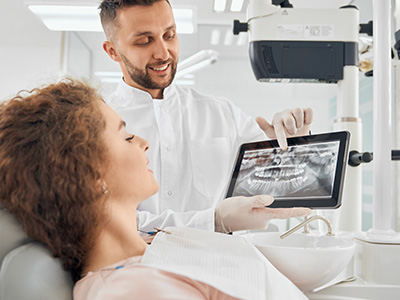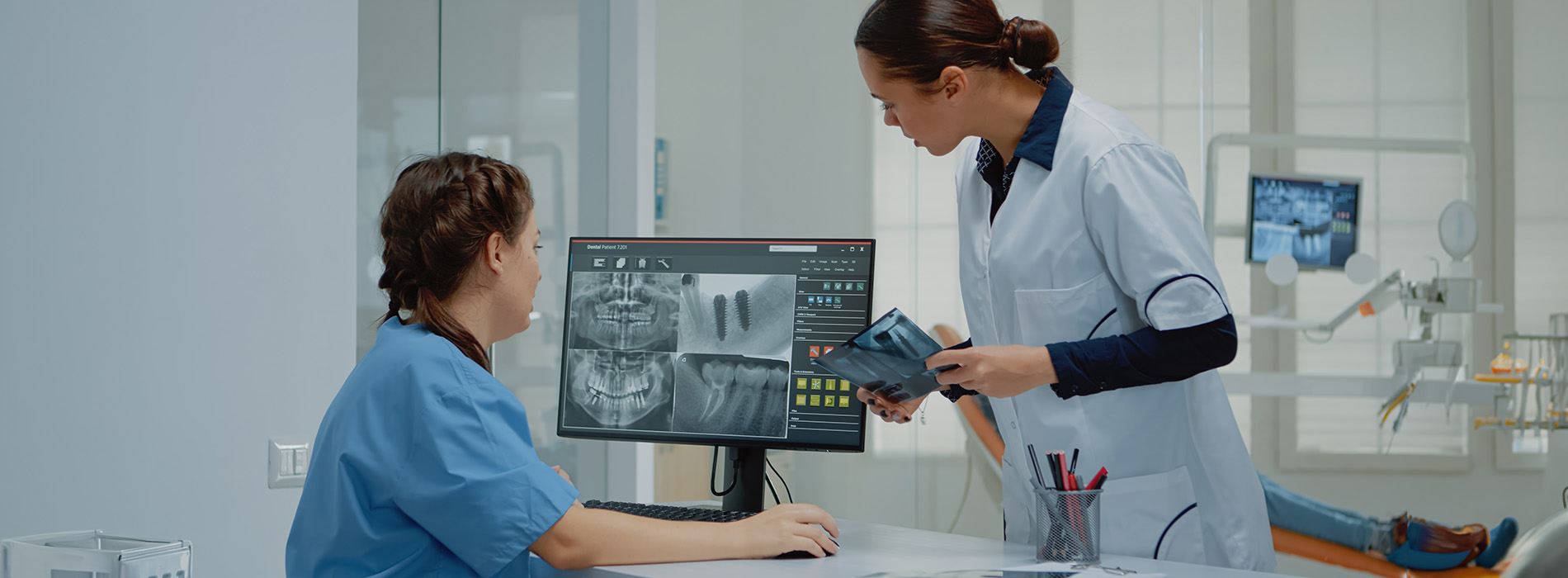South Forsyth County

Our Offices
574 Peachtree Parkway
Suite 110
Cumming, GA 30041
Existing Patients: (770) 886-8911
New Patients: (770) 406-0667
Downtown Cumming

Orthodontic records are the careful, methodical collection of clinical information that allows an orthodontist to see the whole picture — not just the teeth but the jaws, facial balance, and how structures change over time. Think of these records as the roadmap for treatment: they document where a smile begins so each clinical decision can be matched to measurable goals. Good records reduce uncertainty and create a repeatable baseline for planning, monitoring, and decision-making throughout treatment.
High-quality documentation helps separate cosmetic concerns from structural or functional problems. For example, a crowding issue might be purely dental, or it could be influenced by jaw position or growth patterns. By assembling a complete dataset, clinicians can prioritize what must be corrected now and what can be monitored, aiming for results that are stable and harmonious with the patient’s facial features.
Beyond immediate diagnosis, orthodontic records support continuity of care. They make it possible to review case history years later, coordinate with other dental specialists when needed, and defend clinical choices with objective evidence. For patients, that means safer, more predictable treatment delivered with a clear rationale.
A comprehensive records appointment typically includes intraoral and extraoral photographs, diagnostic radiographs, and precise dental models or digital scans. Photographs capture tooth positions, smile dynamics, and facial proportions from several angles, which helps both the clinician and the patient visualize treatment goals. These images are invaluable when explaining options and expected outcomes in an understandable way.
Diagnostic radiographs reveal what cannot be seen at a glance: root positions, unerupted or impacted teeth, jaw relationships, and bone support. Modern digital panoramic and cephalometric imaging provide a broad, lower-radiation view of the jaws and craniofacial anatomy, enabling the orthodontist to identify issues that influence timing and mechanics of treatment.
Digital impressions or traditional study models record the precise shape and occlusion of the teeth. Virtual models allow three-dimensional analysis of arch form, spacing, and contacts, and they can be stored and compared without degradation over time. Together, these components form a reliable, three-dimensional portrait of the patient’s starting point.
Records don’t just describe: they inform. When photographs, x-rays, and models are reviewed together, a clear diagnostic picture emerges. This integrated dataset helps determine whether a patient benefits from early intervention, whether orthodontic movement alone will suffice, or whether coordination with restorative, periodontal, or surgical specialists is required. Treatment goals are set with measurable endpoints so progress can be assessed objectively.
Choosing appliances, timing treatment phases, and planning tooth movements all depend on accurate records. For growing patients, records help predict how facial growth might influence outcomes and whether interceptive measures are warranted. For adult patients, records clarify bone support, root health, and any restorative constraints that could affect the mechanics or sequence of care.
Using records as a living reference allows clinicians to adjust plans when tissues respond differently than expected. This evidence-based approach minimizes unnecessary delays, improves predictability, and supports decisions that balance aesthetics, function, and long-term stability.
The records visit is typically efficient and designed to be comfortable for patients of all ages. After confirming medical and dental histories, the clinical team will take a coordinated set of photographs and digital x-rays. If impressions are needed, many offices now offer fast intraoral scanning that replaces messy putty and improves patient comfort, especially for children or those with sensitive gag reflexes.
During the visit, the team checks factors that influence orthodontic planning, such as gum health, tooth mobility, and bite wear. These clinical notes are combined with the visual and radiographic data to produce a complete diagnostic file. Staff will explain what each record is for and how it contributes to the proposed treatment plan so that patients and families understand the reasoning behind recommendations.
Language support and clear communication are part of a successful records appointment. At our practice, clinicians make time to review the findings with patients and caregivers, answering questions in plain language so expectations are aligned and the next steps are clear.
Accurate capture and careful storage are essential for records to remain useful over time. Practices use calibrated equipment and trained personnel to ensure images and models are reproducible, which permits valid comparisons across different visits. Consistency in how records are taken improves diagnostic confidence and reduces the likelihood of misinterpretation.
Digital recordkeeping has greatly improved accessibility and preservation while maintaining legal and ethical obligations around privacy. Secure archiving allows clinicians to retrieve prior records quickly for treatment review, specialist consultation, or future restorative planning. When patients change providers or return years later, reliable records preserve the clinical narrative.
Finally, keeping a complete record set offers ongoing clinical value: it helps monitor facial growth in children, assesses the stability of prior treatment, and informs any future dental care that depends on historical information. Thoughtful stewardship of records is an investment in safe, evidence-based care for every patient.
Summary — Orthodontic records are the structured evidence that supports accurate diagnosis, thoughtful planning, and predictable treatment outcomes. By combining photographs, radiographs, and precise models or scans, clinicians create a clear starting point and measurable milestones for care. If you’d like to learn more about how we collect and use orthodontic records or how they apply to your situation, please contact Inspirational Smiles Orthodontics for more information.
Orthodontic records provide a comprehensive view of a patient’s teeth, jaws, and facial structures. They serve as the roadmap for treatment, supporting accurate diagnosis, personalized planning, and predictable outcomes. Good records also allow continuity of care and coordination with other dental specialists.
Records often include intraoral and extraoral photographs, diagnostic radiographs (such as panoramic and cephalometric images), and dental models or digital scans. These tools capture tooth positions, facial proportions, jaw relationships, and occlusion to create a three-dimensional starting point for treatment planning.
By integrating photos, x-rays, and models, orthodontists can evaluate dental, skeletal, and functional factors to set measurable treatment goals. Records inform appliance selection, treatment timing, and the need for coordination with other dental specialists, while helping anticipate how growth or anatomy may influence outcomes.
During a records visit, the clinical team reviews medical and dental histories, takes photographs and digital x-rays, and captures impressions or scans if needed. Additional clinical notes on gum health, tooth mobility, and bite are recorded. The team explains each record’s purpose and how it informs the treatment plan.
Records are stored securely, often digitally, to preserve accuracy, privacy, and accessibility over time. Consistent capture methods and secure archiving allow clinicians to track growth, monitor treatment progress, coordinate with specialists, and review historical data if patients change providers or return years later.
Accurate records reduce uncertainty, improve treatment predictability, and support evidence-based decisions. They separate cosmetic issues from structural concerns, allow measurable progress tracking, and provide a reliable reference for long-term monitoring of facial growth, alignment stability, and future dental care.



No referral is needed; your first visit includes a complimentary consultation to see how orthodontic treatment may help you. We invite you to be our special guest.
